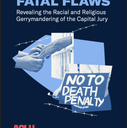
Juries in two Broward County, Florida death-penalty trials have handed down life sentences for four capital defendants in the span of one week, highlighting the effect of a new Florida law requiring the unanimous agreement of the jury before a defendant can be sentenced to death. On July 16, a Broward County jury spared three defendants—Eloyn Ingraham, Bernard Forbes, and Andre Delancy—whom it had convicted in March of murdering a Broward sheriff’s deputy. Three days later, another Broward jury rejected the death penalty for Eric Montgomery, after having convicted him in April of the murders of his wife and stepdaughter. The verdicts marked the third time in four capital trials since Florida adopted the jury unanimity requirement that Broward juries have opted for life sentences. The sole exception was the case of Peter Avsenew, who represented himself in the penalty-phase after firing his lawyers, presented no penalty-phase defense, and told the jury he had “no regrets” for his actions and was “proud of the decisions [he’d] made.” South Florida juries in Palm Beach County also have recommended life sentences in the three first-degree murder trials conducted there since September 2017. In March 2017, the Florida legislature changed its death penalty law in response to two Florida Supreme Court decisions in October 2016 that declared the state’s practice of permitting judges to impose death sentences based upon a non-unanimous jury recommendations for death to be unconstitutional. Those decisions were based on the U.S. Supreme Court’s January 2016 decision in Hurst v. Florida, which ruled that Florida’s previous death-penalty statute violated the Sixth Amendment right to a jury trial by giving judges, rather than the jury, the ultimate power to find the facts that could lead to a death sentence. Florida’s criminal law required unanimity for every other decision made by a jury, and the 2017 amendment brought Florida’s law into line with the laws of virtually every other death-penalty state. Only Alabama still permits a trial judge to impose the death penalty based upon a jury’s non-unanimous sentencing recommendation.
Before the 2016 court rulings, three-quarters of Florida’s 390-person death row had been sentenced to death after jurors had split on whether to recommend death. In 2017, just three death sentences were imposed statewide, down from nine in 2015. (Capital trials were on hold for most of 2016.) As a result of the state’s former non-unanimity rule, Broward and eleven other Florida counties were among the 2% of U.S. counties responsible for a majority of prisoners on death row across the country as of January 1, 2013. 90% of Florida’s death-row exonerations have come in cases in which juries did not reach a unanimous recommendation for death.
(Rafael Olmeda, Broward jury chooses life for convicted killer, South Florida Sun Sentinel, July 19, 2018; Rafael Olmeda, Jury rejects death penalty for men who killed Broward deputy, South Florida Sun Sentinel, July 16, 2018; Rafael Olmeda and Marc Freeman, South Florida killers avoiding death row under new law, South Florida Sun Sentinel, July 20, 2018.) See Sentencing and U.S. Supreme Court.



